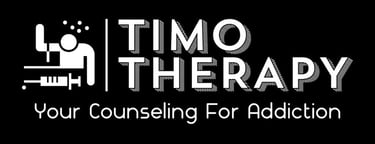Understanding Dual Diagnosis: Why Patients Are Often Treated as an Afterthought
Why Dual Diagnosis Patients Are Often Treated Like an Afterthought exposes the systemic failure to properly integrate mental health and addiction care. Many facilities separate what should be connected, leaving those with co-occurring disorders without the support they truly need.
ALCOHOL & DRUG ADDICTION EDUCATION


What is Dual Diagnosis?
Dual diagnosis, also known as co-occurring disorders, refers to the condition in which an individual experiences both a mental health disorder and a substance use disorder simultaneously. This phenomenon is becoming increasingly prevalent, with research indicating that around 50% of individuals diagnosed with severe mental health disorders also grapple with substance abuse issues. The intersection of these two disorders creates a complex and multifaceted challenge for both diagnosis and treatment.
When addressing dual diagnosis, it is essential to understand that the presence of both a mental health issue and a substance use disorder can exacerbate the symptoms of each condition, making it more difficult for healthcare professionals to provide effective care. For instance, someone suffering from depression may turn to alcohol in an effort to self-medicate, while those with anxiety disorders might misuse drugs to alleviate their symptoms. These behaviors not only complicate the individual's mental health but can also interfere with their recovery journey, leading to a vicious cycle of worsening symptoms and increased substance use.
Furthermore, diagnosing dual diagnosis can be challenging due to overlapping symptoms. Traditional screening methods may not accurately capture the nuances of a patient’s experience, often leading clinicians to miss critical signs of a concurrent disorder. As a result, patients may be treated primarily for one condition while the other goes unaddressed, leaving many feeling undervalued and as if they are an afterthought in the healthcare system. This lack of comprehensive treatment can hinder progress and recovery, resulting in discouraging outcomes for individuals seeking help.
The Intersection of Mental Health and Addiction
The interplay between mental health and addiction is a complex phenomenon that significantly affects individuals struggling with dual diagnosis. Many patients facing substance use disorders also grapple with various psychological issues, which may include depression, anxiety, and post-traumatic stress disorder (PTSD). These co-occurring disorders often create a cyclical relationship; untreated mental health conditions can lead to substance abuse as individuals seek relief from their emotional pain, while addiction may, in turn, worsen the symptoms of existing psychological disorders.
Understanding this intersection is critical in addressing both aspects effectively. For instance, an individual suffering from anxiety may turn to alcohol or drugs as a coping mechanism, believing that substances will provide temporary respite from their anxiety symptoms. Unfortunately, this reliance can result in the development of dependency, where the need for the substance escalates. Consequently, as their addiction deepens, their underlying mental health issues may become more pronounced, leading to a difficult cycle that is hard to break without comprehensive treatment.
Moreover, conditions such as depression can intensify feelings of hopelessness, prompting individuals to self-medicate with drugs or alcohol. The use of these substances as a form of emotional escape not only fails to alleviate their core issues but often results in increased psychological distress. PTSD, commonly seen in individuals with histories of trauma, similarly exacerbates substance use, as they may use drugs to suppress traumatic memories or emotions.
In conclusion, addressing the relationship between mental health and addiction is crucial for effective treatment outcomes. Recognizing that these conditions frequently coexist allows healthcare professionals to develop integrated treatment approaches that target both substance use and mental health issues simultaneously, thereby fostering a better quality of life for patients affected by dual diagnosis.
Systemic Failures in Treatment Facilities
The treatment of individuals with dual diagnosis, wherein patients present with both mental health disorders and substance use issues, is frequently compromised by systemic failures within treatment facilities. One of the primary concerns is the lack of integrated treatment programs tailored to address the complexities presented by dual diagnosis patients. Most facilities operate under segmented treatment models, which focus on either mental health or addiction, thereby neglecting the need for a coordinated approach. This fragmentation of care can lead to gaps in treatment and support, leaving patients without the comprehensive care necessary for recovery.
Additionally, insufficient training for healthcare providers significantly contributes to the challenge of adequately treating dual diagnosis patients. Many practitioners receive minimal education on the nuances of dual diagnosis during their training, which can result in a lack of competency and confidence when addressing these patients' unique needs. This is further compounded by high staff turnover rates in treatment facilities, which disrupts continuity of care and hinders the establishment of trusting relationships between patients and healthcare providers.
The stigma surrounding individuals with dual diagnoses exacerbates the issue, as both mental health and substance use disorders are often misunderstood by society and within the healthcare system itself. This stigma can lead to patients being labeled or judged, resulting in reluctance to seek help or engage fully in treatment. Furthermore, healthcare professionals may unconsciously carry biases that affect the quality of care provided to these individuals, further marginalizing them within the treatment landscape.
In conclusion, the systemic failures present in treatment facilities—ranging from fragmented models of care to inadequate training and pervasive stigma—contribute to the inadequate treatment of dual diagnosis patients. Addressing these issues is paramount to ensure that individuals receive the comprehensive and compassionate care necessary for their recovery journey.
Barriers to Care for Dual Diagnosis Patients
Individuals suffering from dual diagnosis, which refers to the co-occurrence of a mental health disorder alongside a substance use disorder, often face significant barriers when seeking necessary care. Stigma plays a critical role in this experience, as many individuals may feel shame or fear judgment when disclosing their struggles. This societal stigma can result in reluctance to pursue treatment, leading to worsening conditions and a sense of isolation. The narrative of Lisa, a young woman grappling with depression and alcoholism, underscores this issue. She described how societal perceptions forced her to conceal her struggles, delaying access to vital support treatment.
Another considerable barrier is misdiagnosis. When healthcare providers are unable to distinguish between the symptoms of mental illness and those associated with substance use, patients can receive inappropriate treatments that do not address the underlying issues. This misdiagnosis can perpetuate a cycle of ineffective care, reinforcing the patient's feeling of hopelessness. Mark, who battled anxiety and addiction, recounted his experience of being treated solely for his substance abuse, without considering his mental health needs. Such oversights not only hinder recovery but can contribute to further deterioration of a patient's overall well-being.
Additionally, there is often a lack of access to specialized treatment facilities capable of addressing both aspects of dual diagnosis. Many healthcare systems are ill-equipped to provide integrated services, and patients frequently encounter a fragmented system where care is compartmentalized. Sarah, a dual diagnosis patient, shared her struggles in navigating multiple treatment settings, each focusing on one issue while neglecting the other. These barriers collectively highlight systemic failures within the healthcare structure, rendering dual diagnosis patients at risk of being treated as an afterthought rather than receiving comprehensive care tailored to their unique needs.
Importance of Integrated Treatment Approaches
Integrated treatment approaches play a vital role in effectively addressing the complex needs of individuals with dual diagnosis, which refers to the simultaneous presence of mental health disorders and substance use disorders. This dual challenge has traditionally been treated in siloed environments, where mental health issues and addiction are approached separately. However, recent best practices emphasize the significance of treating both conditions concurrently, as they often interact in ways that complicate recovery processes.
Current models of care advocate for a collaborative treatment framework that combines the expertise of mental health professionals, addiction specialists, and social support systems. Such integrated care ensures that a patient's mental, emotional, and physical health are addressed in a holistic manner, thereby enhancing the overall quality of care. Evidence suggests that patients who receive integrated treatment are more likely to achieve positive outcomes, including reduced symptomatology and improved functioning in daily life. For instance, a study showed that cohesive treatment plans significantly increased engagement in therapeutic programs, leading to better adherence to treatment protocols.
Moreover, integrated treatment fosters a comprehensive understanding of the interplay between mental illness and substance abuse. For example, individuals with anxiety disorders may use substances to self-medicate their symptoms, which can exacerbate both conditions. By treating the underlying mental health issue alongside the substance abuse problem, practitioners can address the root cause rather than merely alleviating symptoms. This not only helps in achieving better immediate results but also supports long-term stability and recovery.
In essence, the implementation of integrated treatment approaches is crucial in meeting the diverse and interconnected needs of dual diagnosis patients. When mental health and addiction treatments are intertwined, patients stand a better chance of achieving lasting recovery and improving their overall quality of life.
Advocacy and Policy Changes Needed
The treatment landscape for individuals with dual diagnosis—those affected by both mental health disorders and substance use issues—requires significant improvements. Advocacy efforts are essential for driving necessary policy changes that can transform care delivery, ensuring these patients receive the comprehensive support they need. This includes urging policymakers to prioritize healthcare reforms that recognize the intricate relationship between mental illness and addiction.
One crucial area of focus is the allocation of funding for integrated treatment programs specifically designed to address dual diagnosis. Such programs not only provide therapeutic interventions for both conditions concurrently but also facilitate a holistic approach to recovery. Advocates must lobby for increased financial resources directed toward training healthcare professionals in effective dual diagnosis treatment modalities. Enhancing the competency of healthcare providers is vital to ensure they can provide appropriate care that addresses the complexities of co-occurring disorders.
Moreover, increasing public awareness about dual diagnosis is essential. Advocacy initiatives should aim to educate the community on the challenges faced by these individuals, reducing stigma and fostering understanding. Campaigns that share personal stories and expert insights can illuminate the reality of dual diagnosis struggles, encouraging collective societal empathy and support. Utilizing various platforms such as social media, community forums, and educational workshops can promote discussions around dual diagnosis, empowering individuals and families affected by these issues to seek help.
In conclusion, a multi-faceted approach involving robust advocacy and thoughtful policy reforms is crucial for improving the treatment landscape for dual diagnosis patients. By pushing for integrated programs, training for healthcare providers, and enhancing public awareness, we can ensure that individuals suffering from both mental health and substance use disorders are treated with the dignity and care they deserve.
Conclusion and Call to Action
In wrapping up the discussion on dual diagnosis, it is crucial to recognize the multifaceted nature of this condition. Individuals facing both mental health challenges and substance use disorders often suffer from stigmatization, which can lead to being treated as an afterthought within healthcare systems. This neglect not only exacerbates their condition but also impedes their chances of recovery and overall well-being. Professionals and institutions must adopt a more integrated approach, ensuring that dual diagnosis patients receive comprehensive and continuous care tailored to their unique needs.
Moreover, it is imperative for society to foster an environment that promotes awareness and understanding of dual diagnosis. This involves educating ourselves and others about the complexities surrounding mental health and substance use disorders. By advocating for policies that support integrated care and funding for specialized programs, we can help dismantle the systemic barriers faced by these individuals. It is our responsibility to ensure that dual diagnosis patients are not marginalized or ignored in treatment settings.
As readers, there are numerous ways to get involved and make a difference. Whether through volunteering with organizations dedicated to mental health and addiction, participating in local advocacy groups, or simply spreading awareness among friends and family, each action contributes to a larger movement toward systemic change. By amplifying the voices of those afflicted and holding healthcare providers accountable, we can advocate for a more compassionate and effective approach to dual diagnosis treatment.
Together, we can work towards a future where dual diagnosis individuals are treated with the dignity and respect they deserve, rather than as an afterthought. Let us commit to being allies in this critical cause.




















